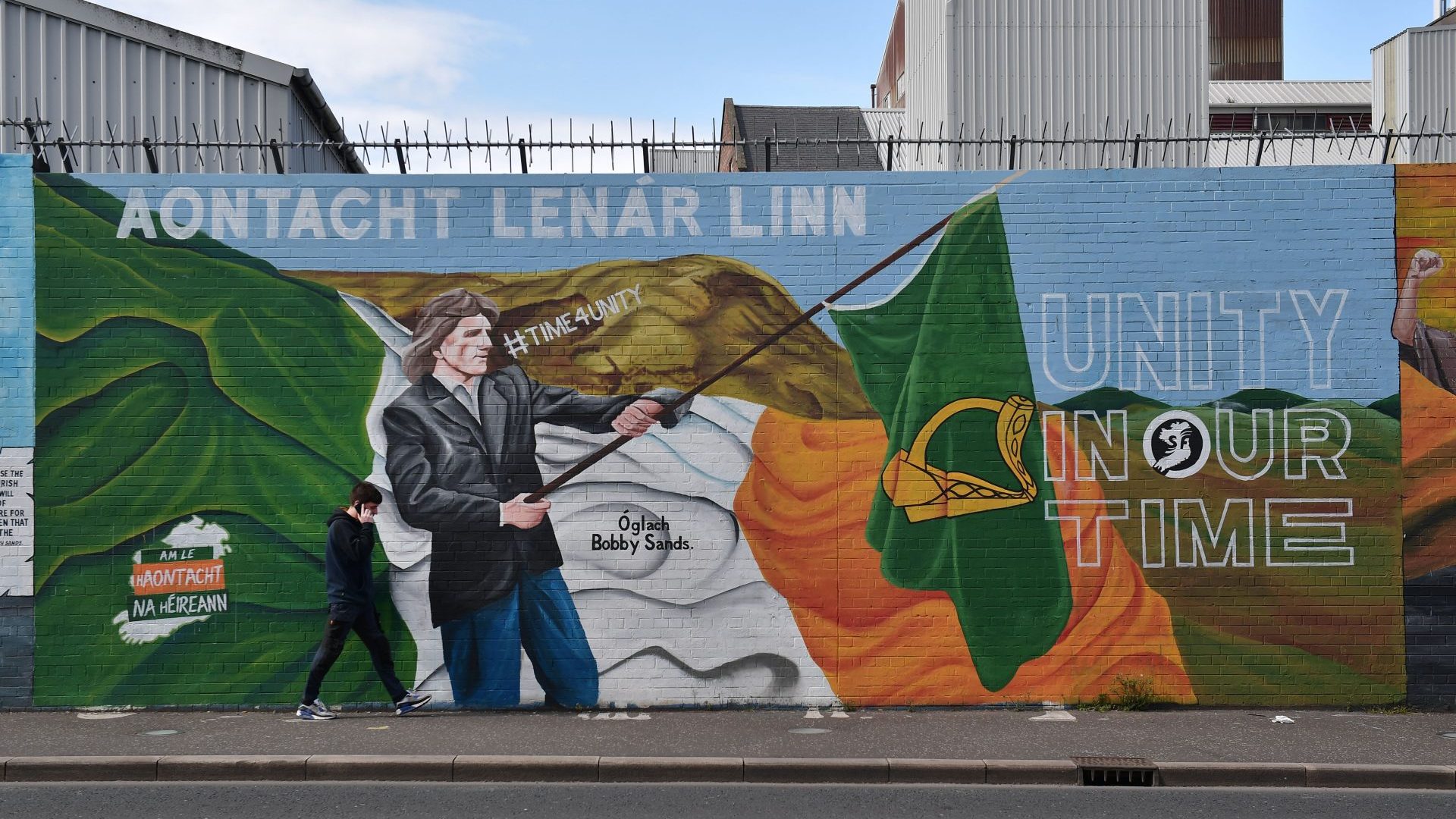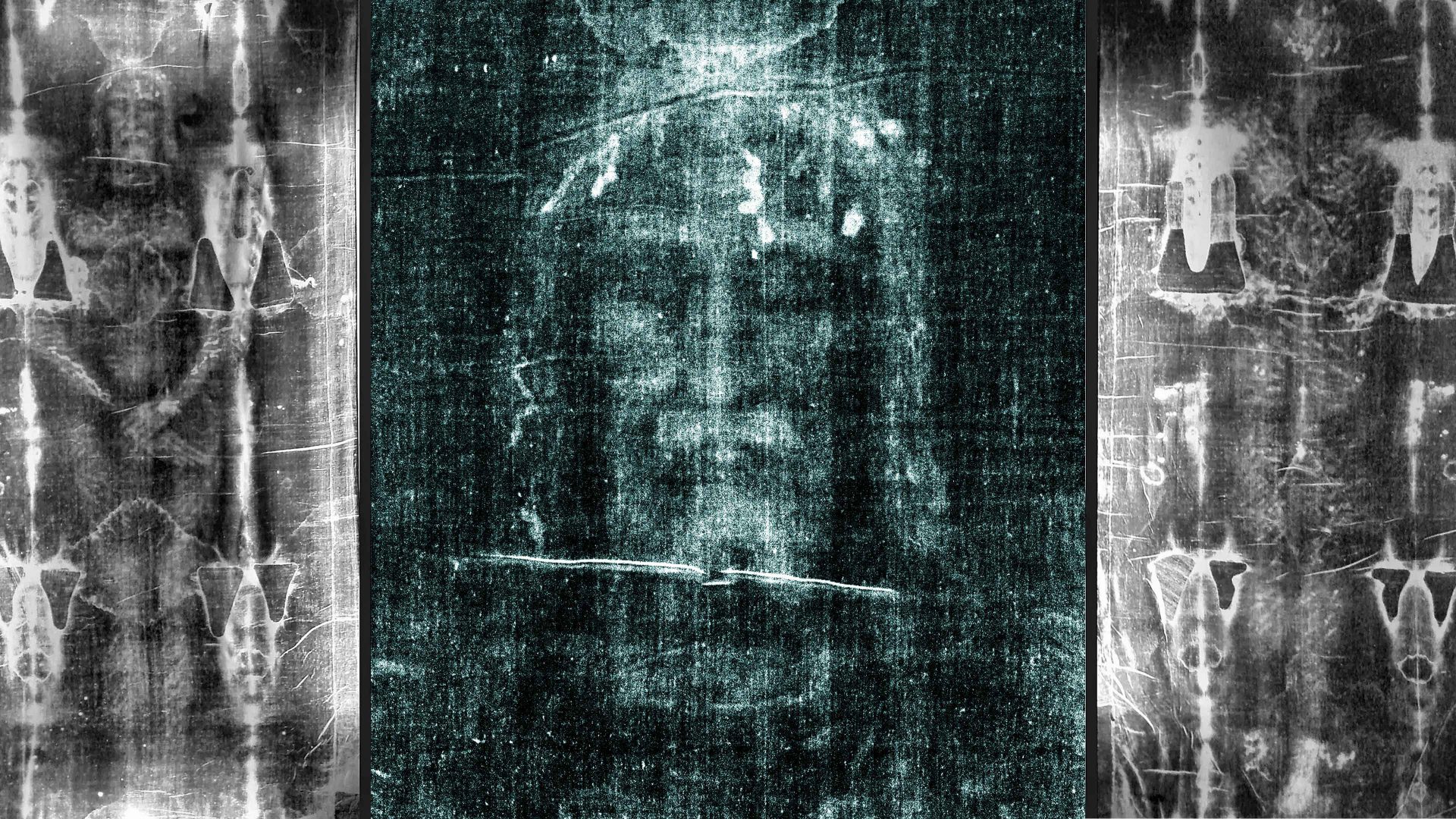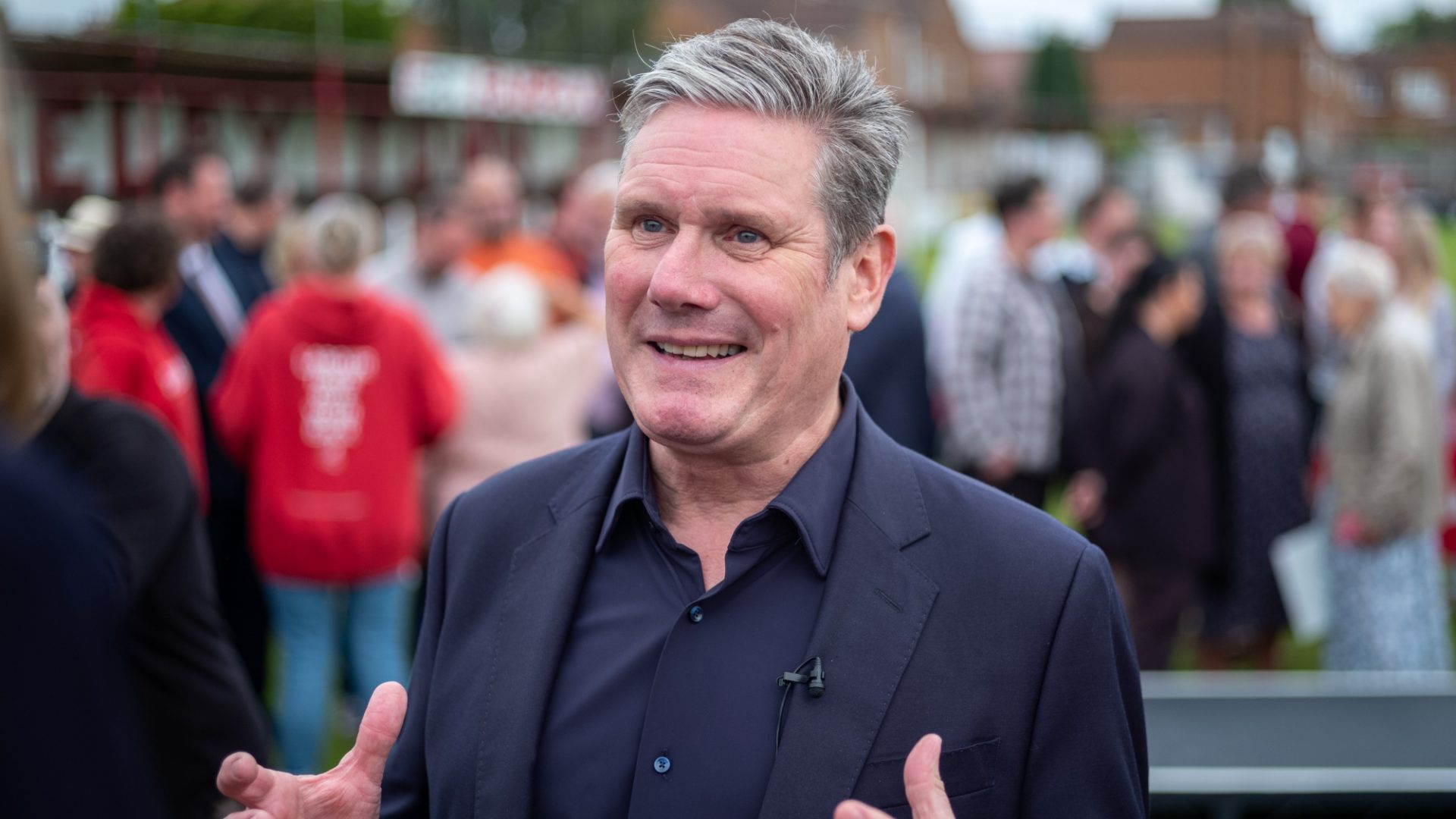There’s a word gaining currency on the island of Ireland – “inevitable”. You hear it more and more often now, and in connection with something that, just a few years ago, most people thought unlikely even within their lifetimes: a united Ireland.
Mary Lou McDonald, the president of Sinn Féin – currently one of the most successful political parties in Europe – constantly uses the language of inevitability when asked about progress towards her political goal of a united Ireland. But it has begun to spread, so that “inevitable” is beginning to act as a linguistic ratchet. The more the word is used, the more people accept it. The more people accept it, the harder it becomes to imagine any other path.
And the harder it becomes to imagine any other path, the easier it is to start imagining what might happen to a defeated, distraught Unionist side if Ireland were to reunite.
They are already worried. Some Unionists attempt to condemn Sinn Féin as a power-suited front for the IRA terrorists who brutalised these islands for more than 30 years. Yet with Sinn Féin now talking in the language of progress and equality rather than conflict, it is still appealing to increasing numbers of young people on both sides of the invisible border.
The Democratic Unionist Party’s cack-handed support for Brexit and trust in the untrustworthy Boris Johnson has exacerbated the problem. The inevitable sellout by the British government over the Northern Ireland Protocol – which led to another collapse of the Stormont government – didn’t help. It simply reminded everyone of British duplicity and Unionist naivety that goes back to Gladstone.
Meanwhile, Sinn Féin just keeps winning. In May it became the largest party in Northern Irish local politics, with 144 council seats to the DUP’s 122. Sinn Féin’s leader in the north, Michelle O’Neill, is first minister-designate, the first-ever Republican to hold that position, after the party gained the most seats in assembly elections last year. But the DUP’s leader, Sir Jeffrey Donaldson, refuses to revive the Stormont government, nominally over opposition to the NI protocol and the Windsor Framework, but also perhaps because he cannot bear to go down in history as the first Unionist to usher in a Republican leader.
In the elections scheduled for the Republic next year, estimates are that Sinn Féin could win about 60 of the 160 seats on offer, making it the biggest party in the Dáil Éireann, the Irish Parliament. As with the DUP in the north, Sinn Féin is making Fine Gael and Fianna Fáil, the main Irish parties, look flat-footed. The party’s slick organisation means members pop up first on Irish media to comment on everything from farm prices to road traffic accidents.
We are, then, in a new political landscape. For a 10-year period from 2007, Northern Ireland seemed to be set fair.
Sure, politics was dysfunctional, and “whataboutery” – the Northern Irish habit of refusing to admit responsibility because “the others” are even worse – was rife. Yet society seemed to be getting on with stuff, tourism was booming, Belfast was becoming a cutting-edge cultural destination – and there was something else. The rise of the Northern Irish. Opinion polls tracked a growing number of people happy to call themselves neither Irish nor British, but Northern Irish.
For many nationalists, this was the best of both worlds. Their Irish identity was enshrined, culture thriving, and yet they also had the benefit of an economy that was experiencing a decades-long period of growth. For those younger, educated residents from a Protestant background, the insistence on being more British than the rest of the UK was, well, a bit embarrassing. For them, to be Northern Irish was to be almost cool.
So what changed? Malachi O’Doherty, an astute commentator, certainly not a Unionist but no friend of Sinn Féin either, put his finger on one reason. He told the Guardian last year: “Part of the sense of momentum towards a border poll is that Britain is so embarrassing at the moment. If I vote for unity, it’ll be out of not wanting to be governed by a Little England run by Tory prats till the end of time.”
And so we are back to Boris and Brexit. Like Scotland, Northern Ireland is a Remain country, 55.8% voting to stay in Europe. Yet both Leave and Remain supporters in the province have been aghast these last seven years at the level of ignorance displayed by Conservative politicians about their corner of the UK and the dangerous insouciance about the possible return of a visible land border. Johnson’s “over my dead body” lie about an Irish Sea border speaks for itself.
All combined, this has led to an awakening in virtually all sections of Northern Irish society. The DUP’s discomfort has given Sinn Féin a golden opportunity that McDonald and O’Neill have seized with both hands. All the talk is of “full and equal citizenship” for all in the new Ireland. “In the future,” says McDonald, talking about Unionists and again using the linguistic ratchet, “they would be British in a united Ireland.”
Opinion polls give McDonald cause for hope. Northern Ireland’s leading pollster, LucidTalk, conducted a survey last year in which a majority welcomed a referendum at some point. While 48% preferred to stay within the UK (41% for a unification), 57% of 18- to 24-year-olds indicated a preference for a united Ireland. For younger people in particular the question is now not just UK or Ireland, but UK or Ireland and Europe.
LucidTalk’s managing director, Bill White, said: “Polls have been averaging about 50% for those wanting to stay in the UK for a while now, but I think that should be much higher, say 70% to 80%, to give any comfort. It is dangerously low for Unionists, I would say.
“Bear in mind that you are comparing a lived experience – people getting paid in sterling, pensions, using health services and so on – against the unknown of a united Ireland. If only 50% of Californians said they wanted to remain in the United States that would be a pretty big story.”
Of course, there is nothing inevitable about “inevitable”, as the SNP in Scotland might tell you. Sinn Féin may brush aside the costs of reunification as small compared with those of Germany, but the very real prospect of a united Ireland has prompted a reaction, not equal but definitely discernible, outside institutional Unionism.
Here, events of exactly 10 years ago are worth revisiting. They offer a portent of what might happen on a larger scale should unification loom.
At the end of 2012, a Sinn Féin-dominated coalition on Belfast City Council voted to cease flying the union flag on City Hall all year round in favour of selected days. The decision brought Loyalist crowds out on to the streets; riots, petrol bombs and street closures followed. The city was paralysed for months, and the economy lost millions. That crisis went largely unnoticed in the rest of the UK, something inconceivable if it had happened in, say, Leeds or Manchester.
On the streets, an unheard-of figure called Jamie Bryson emerged, claiming to speak on behalf of forgotten communities. He was largely dismissed as a blowhard with a grating voice who would soon disappear.
Ten years later, Bryson is no longer so easy to dismiss. Now suited and booted, he is rivalling Sinn Féin for media coverage while constantly fighting off accusations of close links with the loyalist paramilitary group the UVF, even though he has described it as a “counter-terrorist” group.
Bryson sees the decision to impose the Windsor Framework as a betrayal of the Act of Union in much the same way that the Good Friday Agreement was a quarter of a century ago. He is not alone in this.
So where might this take us should referendums, north and south, back unification? The flag protests of 2013 suggest that a transition would be painful and potentially bloody. In the same interview, O’Doherty, the commentator, worried that ungovernable Loyalist enclaves might emerge in areas of east Belfast and elsewhere, boundary-marked by even more flags, murals and parades, and with the ever-present threat of weapon stashes. It would be a “potential Donbas region”, as he put it.
There is little prospect of the Unionist-Loyalists putting 250,000 people out on to the streets of Belfast, as they did in the mid-1980s to protest against the Anglo-Irish Agreement. Nevertheless, the possibility of “guerilla warfare”, the boosting of recruitment to groups such as the Ulster Defence Association and the Ulster Volunteer Force, the continuation of small pockets of civil disobedience for decades to come, is real.
Some in Sinn Féin have even suggested the Assembly might be retained as a safety valve, as Stormont was to Westminster. However, this overlooks the Assembly’s lamentable record in delivering a devolved government. What price also for the first Unionist to take a seat there, or at the Dáil Éireann for that matter?
There is another side of life in Northern Ireland so often overlooked by commentators and outsiders, focused as they so often are on guns, balaclavas, murals and marches. Among the middle classes, separation is more silent. Business networks are often built in the rugby club (still predominantly Protestant) or at the bar of the Gaelic Athletic Association (still mainly Catholic). Across the board, more than 90% of children go to either Catholic schools, or state schools that are overwhelmingly attended by those from a Protestant background.
It is estimated that fewer than one in 10 marriages are between Catholics and Protestants. McDonald’s “British in a united Ireland” schtick will have to be more than warm words if there are not to be longer-term issues.
Meanwhile, Alex Kane, Northern Ireland’s leading liberal Unionist commentator, says Unionists are spooked. “For all the gung-ho bluster, Unionists/Loyalists are aware that they don’t have the numbers on their own to secure the union,” he says.
And he has a grimmer message in the event of a united Ireland. One that sees no role for Unionism at all.
“Unionism as a political/electoral identity could not survive in a united Ireland. I don’t think it could be accommodated,” he says. “I’m pretty sure the political establishment in the south would not want to encourage the recognition of a ‘Unionist dimension’, some form of mandatory representation in government or either a veto or weighted majority.”
His prediction, though, is that while violence could return, the majority would “shrug their shoulders” and get on with it, with perhaps 15% of the population considering leaving. That would still mean more than a quarter of a million people probably heading for what’s left of Britain.
The years of relative stability, of the rise of the Northern Irish, the frictionless border, a certain easing of tensions, seem a long way away. Gung-ho politicians in England, backed by a few “useful idiots” in Belfast, have opened wide a door that was barely ajar.
Brexit unpicked the ties that bind across the UK. They were always much more fragile in Northern Ireland. Those who have brought us to this point did not understand or, more importantly, care about this. While those whose dream is a united Ireland, looking out towards the rest of the world, can almost touch it, Unionists look like getting a very long time to ponder where it all went wrong. For now, “inevitable” feels about right.



